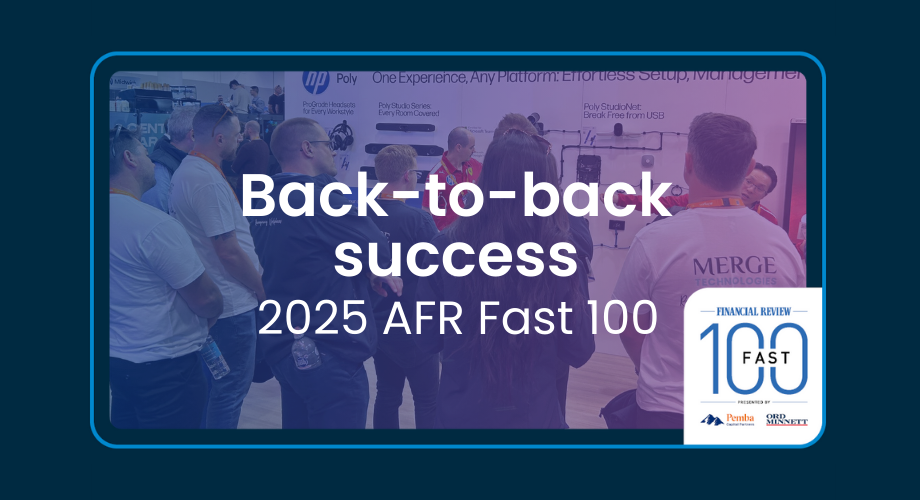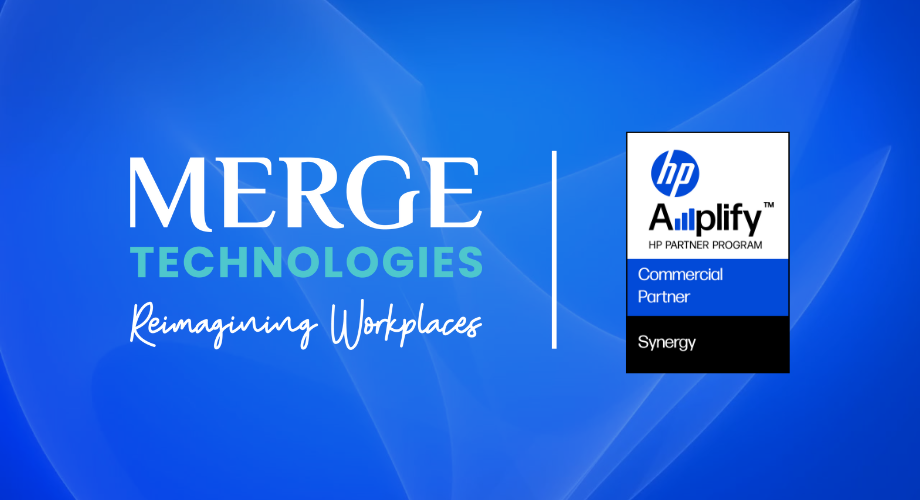
The hybrid work transition is inevitable and businesses are rushing to adopt new ways of working. However, this transition is being impeded by a major tech gap as many businesses lack the capabilities to meet the evolving requirements of a distributed workforce.
In this era of The Great Resignation, employees are leaving their companies for those which offer better work experiences. Businesses need to adapt to meet rising expectations and evolving demands to retain employees and attract new talent. To sustain the hybrid work experience, businesses urgently need to reprioritise their investments to upgrade workplace technology and infrastructure. Those that don’t catch up will be left behind.
.jpg)
Let’s take a look at Company X which is currently experiencing a common scenario.
Like its industry peers, Company X became fully remote two years ago. Now, as we emerge from the pandemic, the nature of work has fundamentally changed. Employees expect more flexibility and Company X is moving towards a permanent hybrid work model. With staff constantly shifting locations, Company X has to re-evaluate its workplace strategies to create a cohesive hybrid office experience.
This is proving to be quite challenging – employees are getting tired of unnecessarily tedious meetings and are becoming less engaged. Although Company X is willing to offer a hybrid work model, their existing technological capabilities are just not up to the task. As a result, they are losing their best employees to competitors who are able to deliver more seamless and engaging hybrid work experiences.
.jpg)
Company X has to turn their hastily implemented solutions into permanent and reliable strategies for 2022 and beyond. Hybrid work has come with a new set of problems for workspace management and collaboration, which they need new tech solutions for.
These are some their problems and potential solutions to overcome them:
Problem: Re-navigating workspaces
.jpg)
Constantly moving between work and home, Company X’s employees are getting frustrated by fragmented work experiences. For their health and safety, they are also concerned about cleanliness and social distancing in the office. They are unsure about heading into the office and whether there will be workspaces available for them.
Solution: Workspace management systems
.gif)
Company X needs flexible physical and virtual workspaces that enable seamless and cohesive experiences. By upgrading their technology, they can manage and monitor usage of all workspaces including hot desks, collaboration spaces, conference rooms and other facilities. They can enforce capacity limits and allow employees to book spaces in advance. Staff movement can be recorded for retrospective contact tracing and automated cleaning schedules will provide peace of mind. They can also use digital signage to enable real-time engagement and communication of important messages to everyone onsite. These workspace management systems can even generate reports to help them better understand space planning and resource utilisation to increase agility and optimise efficiencies in the workplace.
Problem: Communication and collaboration
.gif)
With a hybrid work model, it has been challenging to replicate in-person connections. Like most workplaces, Company X’s employees in the office have a distinct advantage over those connecting remotely. Employees are experiencing a discrepancy in their communication and collaboration abilities, depending on their location and ability to access certain tools and devices. This gap impacts team culture and productivity by impacting who gets to speak and in what ways. Those without effective collaboration tools and skills are starting to feel siloed and disengaged.
Businesses like Company X can address this by implementing customised audio visual technology to drive better communication and collaboration experiences.
Solution: Meeting room systems
.jpg)
Staff who have been using their own devices while working from home are struggling to connect from these same devices in the office. By implementing Bring Your Own Device (BYOD) or Bring Your Own Meeting (BYOM) Rooms, anyone is able to instantly host a video conference meeting from their own device with a simple click or voice command. The host controls the meeting in a room that wirelessly integrates with their own devices, creating an intuitive and effective experience.
To manage health and safety concerns, Zoom Rooms is a potential solution which enables contactless check-in with a webcam. It uses room scheduling displays to show capacity limits and safety protocols. Users can also conduct remote temperature checks, check carbon dioxide levels and room occupancy from their dashboards.
Solution: Video conferencing tools

Solutions like Neat Symmetry help to restore the balance between remote employees and in-room counterparts. It automatically frames and presents in-room participants equally up-close on-screen, without any manual adjustment required. This delivers a natural and productive experience, allowing everyone to be seen and heard equally, no matter where they choose to work.
For those working at home, basic webcams and headsets no longer suffice. The home office experience needs to be improved with better technology like personal collaboration devices, video conferencing bars, sound masking and acoustic privacy screens.
Solution: Unified communications

Company X’s employees are starting to use more accounts and devices across multiple settings. But data is scattered across different devices; messages are not being delivered via consistent platforms; time is wasted looking for information across different systems. Basically, things are getting overwhelming and confusing.
Businesses will benefit from fully integrating all their communication channels – unifying their softphones, handsets, headsets, mobile apps, audio, video and instant messaging into a single cloud platform. This enables convenient and effective collaboration experiences, saving time and money.
Workplaces have drastically changed in the past couple of years and most workplace technology is overdue for an upgrade. Merge Technologies empowers businesses to stay competitive with personalised purpose-built solutions for a hybrid workforce. We create seamless workspace management and collaboration solutions and provide staff training to accelerate user adoption. If you’re interested in leveraging technology to improve your employee experience, get in touch with us today.



